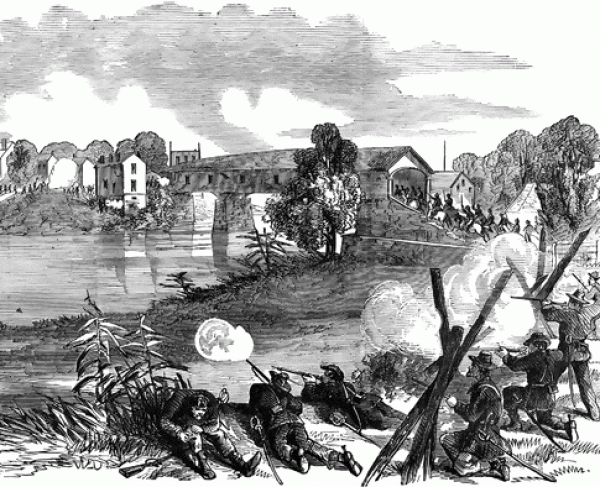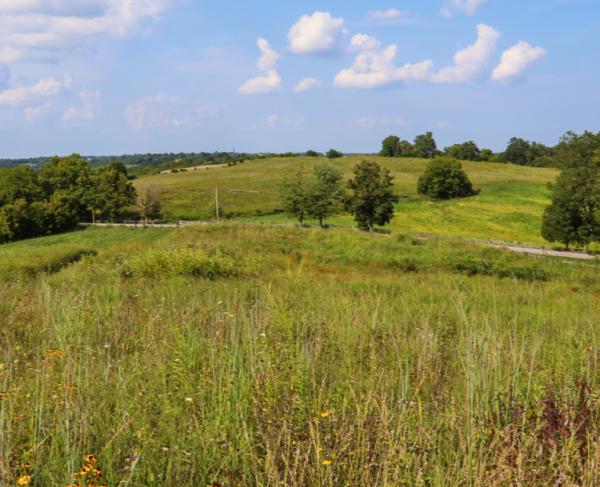Perryville: Then & Now
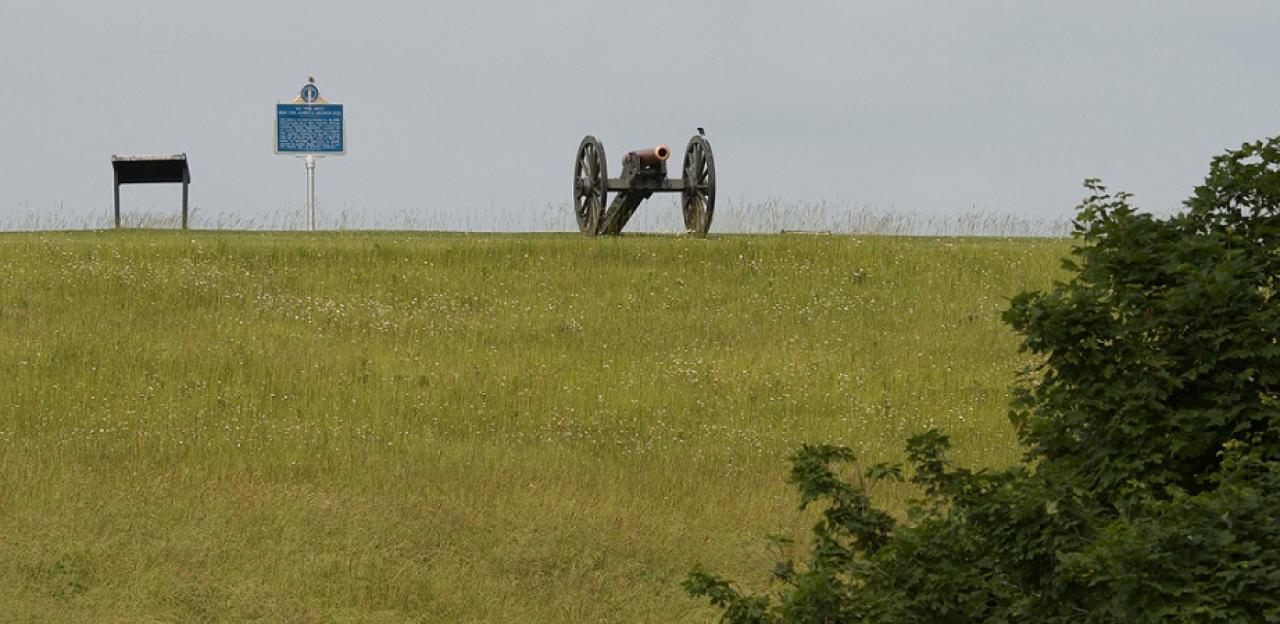
In 2011, The Civil War Trust had the opportunity to ask Kurt Holman, manager of the Perryville Battlefield State Historic Site, a number of questions on the importance of the Battle of Perryville and the state of the battlefield's preservation.
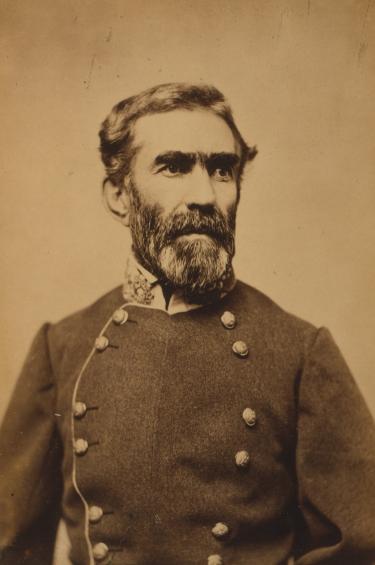
Civil War Trust: The Battle of Perryville was the culmination of one of the great northern thrusts by the Confederacy during the Civil War. What was Braxton Bragg’s strategic goal for this 1862 campaign?
Kurt Holman:Politically, he wanted to make a show of force of Confederate Arms into Kentucky to stimulate recruiting efforts in the State of Kentucky. He believed (as did many other Confederates) that Kentuckians were just at the tipping point of joining the Confederate Cause en-mass and all that was needed was a show of force. Also the control of Kentucky would show the world that the Confederate reversals in the Western Theater were a temporary anomaly, and official recognition from England and France would be sure to come which would then lead to a negotiated peace with the United States, thus Confederate independence.
Militarily, with Kentucky in Confederate hands, the United States would be denied access to the Ohio, Mississippi, Cumberland and Tennessee rivers, which were major invasion routes into the south, putting the United States on the strategic defensive. Also, Kentucky’s substantial agricultural resources as well as fighting men would be added to the Confederacy.
Union Maj. Gen. Don Carlos Buell’s army significantly outnumbered Bragg’s. How was it that Bragg became the attacker and Buell the defender at Perryville?
KH: The short answer is a lack of what the modern military people call “situational awareness”: Neither side had a clue to the strength of the other. The opposing forces at Perryville each believed they were opposed to an equally-sized force. The Confederate Army of the Mississippi was en route towards Lawrenceburg and the Union army of the Ohio was in cautious pursuit. When the Confederates turned and attacked with their force of under 17,000 men, they had no Idea the Union forces in their immediate front consisted of almost 60,000 men. The Confederates believed that Buell and his main force was concentrating much farther north, and the Union force opposed to them was a much smaller detachment. The dysfunctional nature of Buell’s command structure allowed the Confederates to get away with it. Had Bragg known the true size of the Union Army at or near Perryville, he would have not attacked.
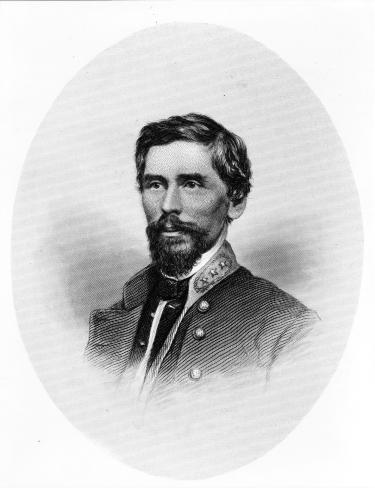
The Civil War Trust is embarking on a plan to save a new 141-acre section of the Perryville battlefield. Can you tell us more about the history associated with this tract?
KH: This property is extremely important. As the battle of Perryville took shape, almost the entire Confederate force of almost 17,000 was concentrated against the weakest and smallest Union Corps; Union First Corps, with 13,000 men, with no cavalry brigade, and half of them raw recruits. Both Flanks of First Corps were aggressively attacked and turned. This property sits squarely on Union First Corps’ Right flank. On this flank, two Union regiments, the 3rd Ohio and the 15th Kentucky desperately tried to hold on to their positions against concentrated attacks on three sides from three of the best brigades in the Confederate Army; Daniel Adams, Bushrod Johnson, and Patrick Cleburne, while under the concentrated artillery fire from the likes of “The Jefferson Artillery” (Darden’s Mississippi Battery) and the 5th Company, Washington Artillery. As if all that was not bad enough for the Ohioans and Kentuckians, the Barn yard they were sheltering behind was set afire by the aforementioned Confederate Artillery, so the defenders had to also contend with their positions literally burning up around them. All of this in clear view of Union Army Third Corps who could only watch their comrades battle hopeless odds while they awaited orders. At least 560 men were either killed, wounded, or were captured on this 141 acre farm.
Update: The Civil War Trust successfully preserved this tract of land in 2011.
The Squire Henry Bottom House was a prominent landmark during the fight on the Union right. Tell us more about this property and Squire Bottom.
KH: According to the 1860 agricultural Census, Henry Pierce Bottom’s farm consisted of over 600 acres. Most of the Battle of Perryville was fought on his farm. Although he was a Unionist and no members of his extended family joined the Confederacy (any relatives of Henry who were in the service fought for the Union), he did own slaves, which drew the ire of local Post-War Abolitionists. He was branded a Southern Sympathizer and denied any war claim compensation from the United States government. After Henry’s death in 1902, his sons re-opened the War claim and, after much litigation and over 600 pages of testimony, Henry’s estate was awarded a whopping $228.66 in the 1920s. The following testimony from the War Claim says it all:
“Did Mr. Henry P. Bottom ever recover from the losses which he suffered at that time?’ - Charles C. Fox
“No sir, he never did. He was broken in sprit from that time on until he died.” - Dr. John B. Bolling
The survival of the Bottom house is quite amazing. For many years it was abandoned and, at one time, it was even used to store hay and was opened to the elements. It was purchased and restored recently and has been kept in excellent condition for future generations.
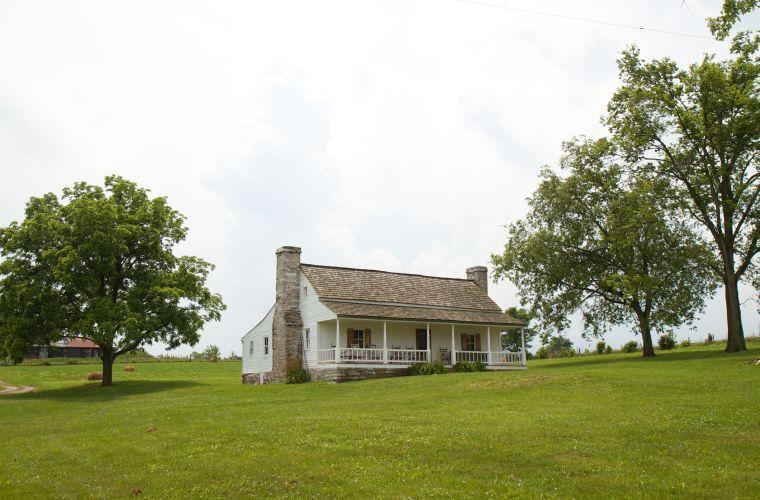
Despite holding a generally strong line, why were so many Union troops forward and out of position on First Corps’ right flank when the Confederate attack came on October 8, 1862?
KH: Because of the lack of “situational awareness” the perceived threat from the Confederates was towards the Northeast, towards Harrodsburg. The Union forces in the area knew the Confederates were moving towards Harrodsburg and, the dust cloud from B. “Frank” Cheatham’s Division moving into a flank position on a parallel road seemed to confirm this false assumption on the part of the Union observers. As a result, the vanguard of Union First Corps was told to send one regiment at a time down to Doctors Creek and fill their canteens with water. The 42nd Indiana was the first regiment to be sent down in what was assumed to be a safe spot, but was, in fact, in the direct line of attack of two Confederate brigades waiting just a few hundred yards over the hill.
The Confederate attack on Union First Corps’ right came as quite the surprise. Why was this?
KH: Because of the false assumptions as to the direction of the Confederate threat mentioned above, all of the Union skirmishers and cavalry picket screens were thrown out to the northeast and not due east or southeast, towards the main threat. Therefore, there was no early warning of the Confederate attack on First Corps right flank.
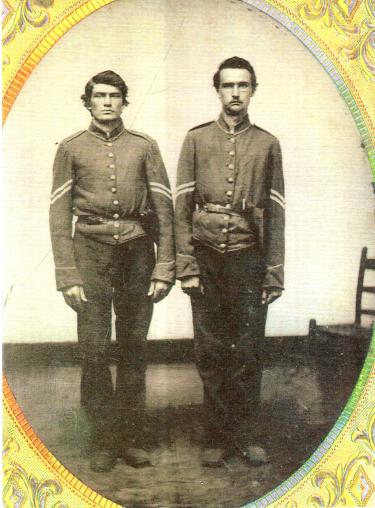
Greatly outnumbered by the Confederates around the Squire Henry Bottom House, Federal units like the 15th Kentucky, 42nd Indiana, and 3rd Ohio faced heavy odds. How would you rank their performance on October 8, 1862?
KH: Exemplary. The only time they “ran” was to get more ammunition so they could run back into the fight.
Tell us more about what a visitor can see at the Perryville Battlefield State Historic Site. How has the landscape changed since October 1862?
KH: Well, the goal is to make it look like it did on October 7th, 1862; the day before the battle. The day of the battle would be too dangerous and the day after would be too messy. Another goal is that, if somehow an original battle participant could visit the park, he would be able to recognize enough that he would be able to navigate around [and boy, would we have questions for him is that ever happened!] To directly answer the question honestly, we don’t know. We can assume the basic geology and topography is the same, or close to it, but the detailed information needed to correctly interpret what vegetation and agricultural features were present on the field at the time is very difficult to ascertain. The earliest maps showing the battlefield were done in the mid 1870s, and even those show no details as to fences, fields, orchards, wooded areas and meadows, they show only troop positions, basic topography, and house sites. We are researching deed information as well as extrapolating anecdotal information from the soldiers themselves to try to understand the terrain, but this is an on-going project. When it comes to obvious modern intrusions, they are thankfully few. There are some farm ponds and post war structures as can be expected. Every time the park acquires property with such modern features, we do everything possible to remove it and restore the land to its 1862 appearance. There are also period features, such as structures and stone fences, that are lost from time to time, and, even these, we hope to someday rebuild.
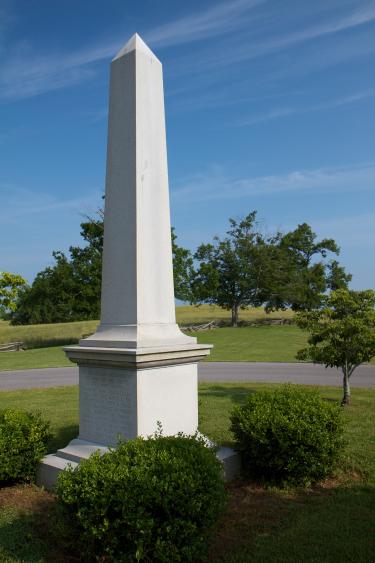
As to what the visitor can see during a visit, we have an excellent museum, an excellent interpretive film, over 10 miles of interpretive trails, punctuated with 50+ interpretive signs that tell the story of the battle. We currently have seven artillery pieces on the ground marking as many artillery positions, as well as almost a mile of split rail “snake” fencing. We have about 1.6 miles of extant stone fences, mostly along the banks of Doctors Creek, which bisects the park. The core of the park was built around the Confederate Cemetery, which consists of two rectangular burial pits enclosed by a stone wall. In the center of the Cemetery on the Confederate Monument, which was installed in 1902, on the 40th anniversary of the battle. The Union Monument was erected in 1928, 50 yards northwest of the Confederate Monument.; As of this time, the park consists of 745 acres.
Are you planning any events, activities, or exhibits for the 150th anniversary of the Battle of Perryville?
KH: There are activities planned all over the state during the 150th anniversary of the Civil War.&; For our 150th Anniversary of the Battle of Perryville, we are planning a large event on October 6, and 7, 2012. Activities are still in the planning stages, but may be found at www.perryvillebattlefield.org.
Learn More: The Battle of Perryville
From early childhood, Kurt Holman’s Grandmother told him stories about her own grandfather’s service in the Civil War, and how he was wounded in the battle of Second Manassas on August 30, 1862. When he came to Kentucky from Iowa in the spring of 1981 to work for his father in Danville, Kentucky, he could not stay from the Perryville Battlefield. Given his life-long interest in the Civil War, he was drawn to this battlefield. There were no Civil War battles in Iowa. Kurt attended the University of Iowa and finished his BA degree at Centre College in Danville with a Major in History. He then went to work for the Kentucky Historical Society in Frankfort and, in the summer of 1989, became the Manager of the Perryville Battlefield State Historic Site. He started the study of the Battle of Perryville almost a decade before.
When he became the manager, he brought with him a small box of files containing copies of primary sources from the battle. This resource has since grown to fill a five-drawer filing cabinet. The park consisted of 98 acres, and aside from the museum, had virtually no interpretation of the battle. The park now encompasses 745 acres, has over ten miles of interpretive trails, and over 50 interpretive signs. Since he has been here, the Museum has been renovated and updated three times.
Always focused on the sacrifice of the men who fought and died here, he has compiled a database of 5,660 names of the approximately 7,600 casualties of the Battle of Perryville and continues to add to it as more names are located.
He had assembled and transcribed all of the surviving after-action reports of the battle and, where appropriate, attached relevant testimony from the “Buell Court of Inquiry”. He has also compiled a database of the original owners of the battlefield land.
His current project is transcribing all of the primary source data into electronic, editable text to better facilitate an understanding of the original terrain features as well as make the information better available to future generations.
Kurt is married with one teenaged son. His hobbies include the study of 19th century Infantry tactics, the subject of which he has had a few published articles, Historic firearms, general military history, and genealogy.
Related Battles
4,211
3,401
